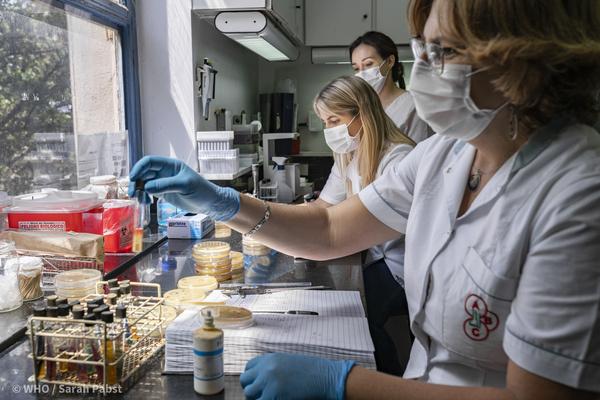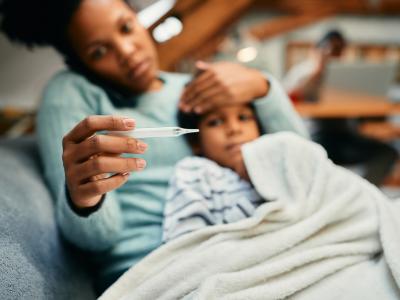The World Health Organization (WHO) today updated its list of the bacterial pathogens it considers the biggest threat to human health.
The updates are the first since the WHO released its initial Bacterial Priority Pathogens List (BPPL) in 2017. The list aims to provide guidance for prioritizing research and development (R&D) and investments in antimicrobial resistance (AMR) and has been used by WHO officials to assess the antibiotic pipeline and to guide AMR surveillance efforts and infection prevention and control strategies around the world.
The agency says the changes address some of the limitations of the initial list and reflect a more comprehensive understanding of the evolution and burden of drug-resistant bacterial pathogens and better surveillance data.
"By mapping the global burden of drug-resistant bacteria and assessing their impact on public health, this list is key to guiding investment and grappling with the antibiotics pipeline and access crisis," Yukiko Nakatani, the WHOs interim assistant director-general for AMR, said in a press release.
Changes in critical- and high-priority pathogens
The updated list, which covers 24 pathogens and 15 "drug-bug" combinations, focuses on the bacterial phenotypes that WHO experts say result in the "highest, most significant health burden" and for which there is the greatest unmet need. The combinations were assessed using eight criteria: mortality, incidence, non-fatal health burden, trend of resistance, transmissibility, preventability in healthcare settings and the community, treatability, and the number of antibiotics in the pipeline that address them.
At the top are the critical priority pathogens, which are those that present the highest threat to public health due to limited treatment options, high morbidity and mortality, and ability to share resistance mechanisms. As in the 2017 BPPL, this group is focused on gram-negative bacterial pathogens primarily found in hospitals, such as carbapenem-resistant Acinetobacter baumannii and carbapenem-resistant Enterobacterales (CRE)—an order of bacteria that includes Klebsiella pneumoniae and Escherichia coli.
By mapping the global burden of drug-resistant bacteria and assessing their impact on public health, this list is key to guiding investment and grappling with the antibiotics pipeline and access crisis.
Among the notable changes in the critical priority group is the addition of third-generation cephalosporin-resistant Enterobacterales (3GCRE), which have been associated with high rates of treatment failure and increased healthcare costs in low- and middle-income countries (LMICs) and vulnerable populations, including young children and newborns. In particular, the WHO notes that the rise in the prevalence on 3GCRE in cases of neonatal sepsis has been associated with increased morbidity and mortality.
"Limited access to affordable antibiotics, resource constraints, inadequate infection control, and high antimicrobial usage contribute to the global burden of 3GCRE and CRE, resulting in increased morbidity, mortality and costs," the WHO wrote.
Also new in the critical-priority group is rifampicin-resistant tuberculosis (RR-TB), which was not included in the 2017 BPPL but was added to the 2024 list because it poses additional challenges to diagnosis, treatment, and clinical management of a disease that killed 1.3 million people in 2022. While the introduction of new drugs and shorter treatment regimens has helped, RR-TB treatment regimens remain longer, more expensive, and more toxic than those for drug-susceptible TB.
Another notable change is carbapenem-resistant Pseudomonas aeruginosa moving from critical to high priority, a group that includes pathogens that are difficult to treat, cause substantial disease burden, and are becoming increasingly resistant. The WHO says the move reflects lower transmission capability compared with other carbapenem-resistant organisms and a decrease in resistance identified in at least one WHO region.
Increasingly resistant community pathogens
Also new in the high-priority pathogen group is fluoroquinolone-resistant Shigella, which is the second most common cause of diarrheal mortality in all age-groups globally. Previously listed in the medium-priority group, Shigella primarily affects children in the developing countries where it is prevalent, but the WHO notes that multidrug-resistant Shigella strains are being increasingly reported in men who have sex with men in urban areas in high-income countries, suggesting a shift in AMR trends.
Shigella is among the "community" pathogens the WHO says are more recognized in this version of the BPPL than in the 2017 version.
"The increase in the priority of community pathogens has important implications for public health and R&D and reflects growing concern about these pathogens and their resistance to antibiotics," the WHO wrote.
Other community pathogens that were previously listed as high priority but are given a higher ranking in the updated BPPL are fluoroquinolone-resistant Salmonella Typhi and fluoroquinolone-resistant non-typhoidal Salmonella. Salmonella Typhi is the leading of typhoid fever, causing an estimated 10 million cases and 116,800 deaths, and is already resistant to several other antibiotics, making treatment more difficult.
The increase in the priority of community pathogens has important implications for public health and R&D and reflects growing concern about these pathogens and their resistance to antibiotics.
Non-typhoidal Salmonella is a leading cause of foodborne illness. While it's distinct from Salmonella Typhi in terms of clinical presentation and disease burden, the WHO says fluoroquinolone-resistant non-typhoidal Salmonella is a global concern because it indirectly increases resistance in typhoidal Salmonella by sharing resistance genes.
Remaining in the high-priority group are methicillin-resistant Staphylococcus aureus, vancomycin-resistant Enterococcus faecium, and third-generation cephalosporin-resistant and/or fluoroquinolone-resistant Neisseria gonorrheae. The WHO notes that while gonorrhea isn't fatal, treatment options have become severely limited, and untreatable infections can lead to pelvic inflammatory disease, infertility, and ectopic pregnancies in women and epididymitis in men.
New additions
Other new drug-bug combinations added to the 2024 BPPL are macrolide-resistant group A streptococci, penicillin-resistant group B streptococci, and macrolide-resistant Streptococcus pneumoniae, which join ampicillin-resistant Haemophilus influenzae in the medium-priority group. All three are becoming an increasing challenge for children and the elderly in LMICs.
"These pathogens are of particular concern as they are associated with a high burden of disease, especially in vulnerable populations and in LMICs," the WHO wrote. "The emergence of resistance in these organisms and others on the list poses significant challenges to effective treatment and control of infections, necessitating ongoing surveillance, research, and targeted interventions."
Notable removals from the BPPL, based on evidence and expert consensus, include clarithromycin-resistant Heliobacter pylori, fluoroquinolone-resistant Campylobacter spp, penicillin-non-susceptible S pneumoniae, third-generation cephalosporin-resistant Providencia spp, and vancomycin-intermediate and -resistant S aureus.























